Blog
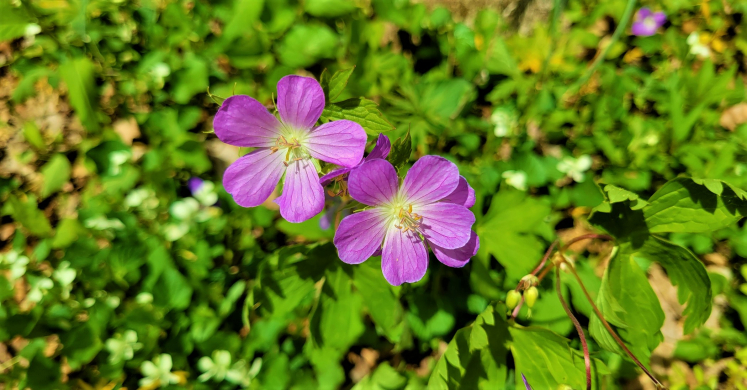
#bioPGH Blog: A Wonderland of Wildflowers
 A resource of Biophilia: Pittsburgh, #bioPGH is a weekly blog and social media series that aims to encourage both children and adults to reconnect with nature and enjoy what each of our distinctive seasons has to offer.
A resource of Biophilia: Pittsburgh, #bioPGH is a weekly blog and social media series that aims to encourage both children and adults to reconnect with nature and enjoy what each of our distinctive seasons has to offer.
Well, if this week's rain and storms gave you the glooms, I have something to cheer you up: wildflower season is upon us! Over the next month or so, our mixed mesophytic forests of Western Pennsylvania will burst into bloom, and that's enough to bring a smile to all of us! Below are some of the flowers we might see in the area and some of the best parks and trails for viewing.
But while there are many places to go, I do want to highlight a classic wildflower hot spot in our area, and that is the Raccoon Creek State Park Wildflower Reserve. A major factor in the wildflower diversity of the Reserve is the availability of limestone. In Pennsylvania, the three most common types of surface rock are sedimentary. If you remember from previous blog posts, we have talked about how the land that is now Pennsylvania was largely under the Iapetus Ocean millions of years ago, which left behind a great deal of sediment, much of which became our sandstone, shale, and claystone. In western PA, our soils tend to have a rather acidic pH from those rock types (pH runs on a scale of 0-14, with 0 being incredibly acidic like battery acid, 7 being neutral, and 14 representing a strongly basic solution like a drain cleaner). Some plants tolerate acidic soils quite well, but not all do. The key to the Wildflower Reserve is an exposed layer of rock that changes the local pH: the Ames Limestone layer. This limestone increases the local pH of the soil to closer to neutral, which optimizes it for, you guessed it, wildflowers! The Pennsylvania DCNR notes that over 700 species of plants can be observed from the trails of just that small fraction of the larger park. How cool is that?
What Might We See?
Pennsylvania has a number of spring ephemeral wildflowers, here is just a little teaser!
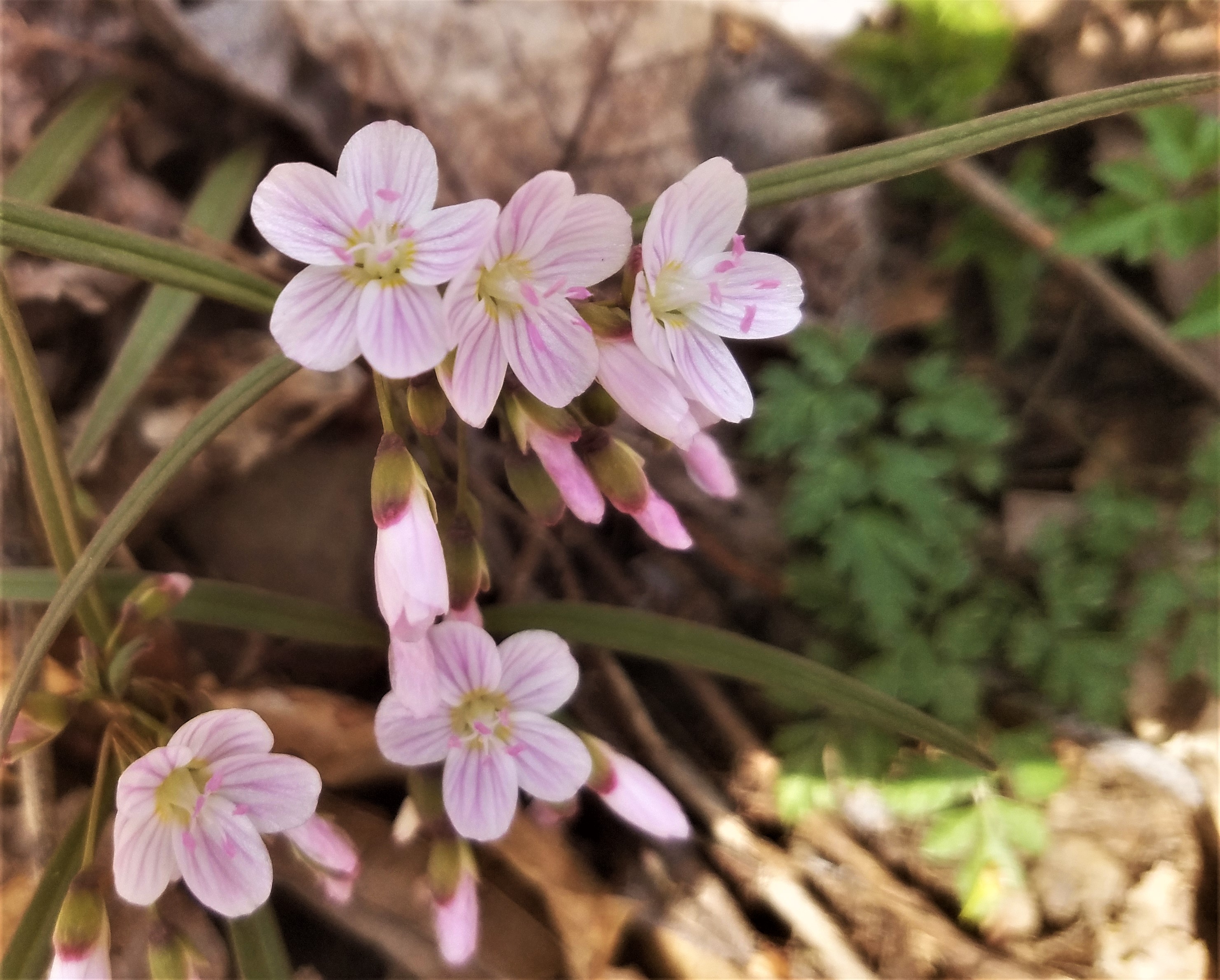
Virginia springbeauty, Claytonia virginica - These delicate little flowers were in perfect bloom this past weekend. The can range from white with only faint pink stripes to a very bright pink! Springbeauties can also be called “fairy spuds,” which is most likely a reference to their edible starchy tuber found just below the ground.

Virginia Bluebells, Mertensia virginica – A beautiful spring ephemeral in the forget-me-not family (Boraginaceae). Once it is done blooming in early May, we may not notice the plant itself as the greens die back and become dormant by midsummer.
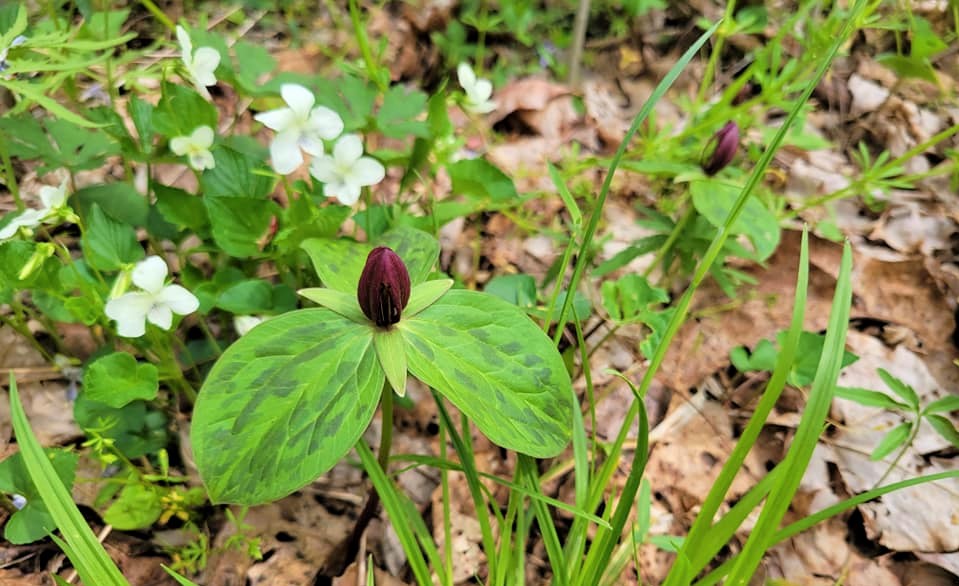
Toadshade, Trillium sessile – A member of the Lily family (Liliaceae) that is distributed across the eastern U.S. Though it looks like a bud, this is the flower in full bloom.
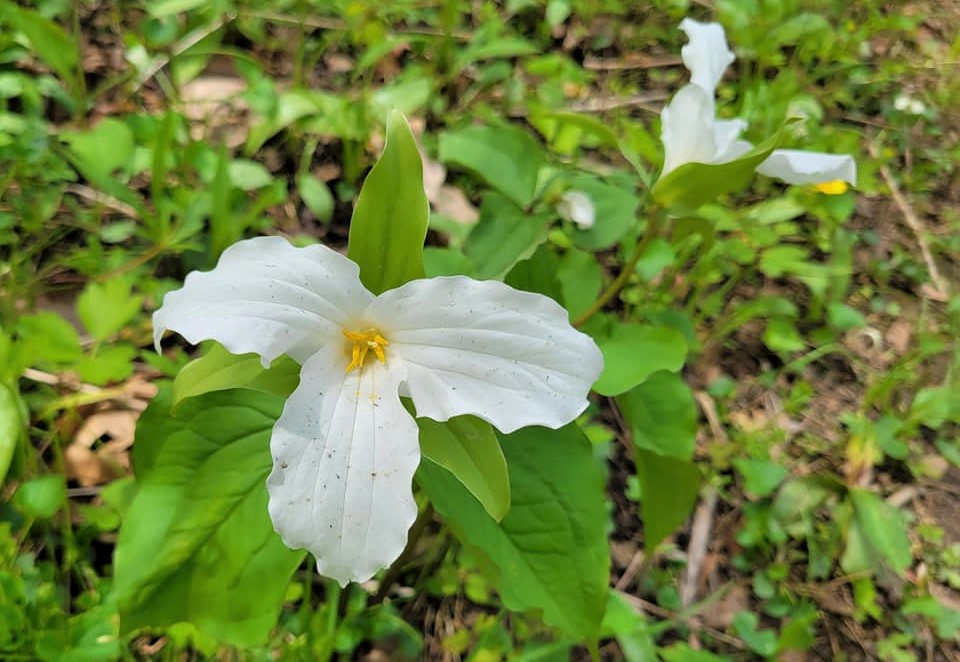
Large white trillium, Trillium grandiflora – Here in Pennsylvania, we can see a few different species of trillium, but their common trait is their fascinating life history. Trillium’s lifespan can be broken up into three stages: juvenile, non-reproductive, and reproductive. The length of each of these stages varies from individual plant to plant, but each stage can last from several years to a decade!
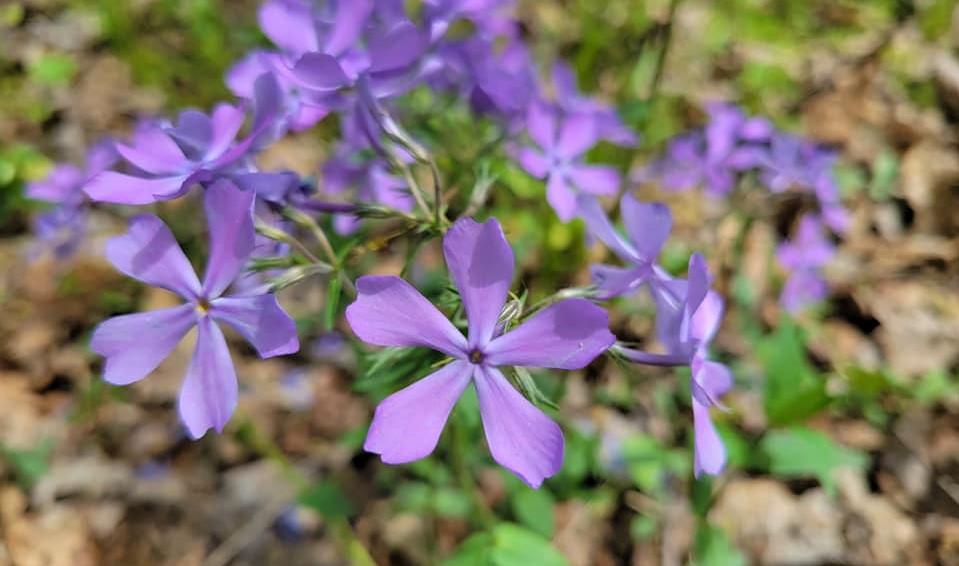
Woodland (blue) phlox, Phlox divaricata – Not to be confused with non-native Dame’s rocket, phlox flowers have five petals in shades of purple to blue, and the leaves are hairy and elongated with smooth leaf edges and rounded tips. It’s a partial shade plant that often grows in a community with other spring favorites such as trillium, mayapple, jack-in-the-pulpit and Dutchman’s breeches.
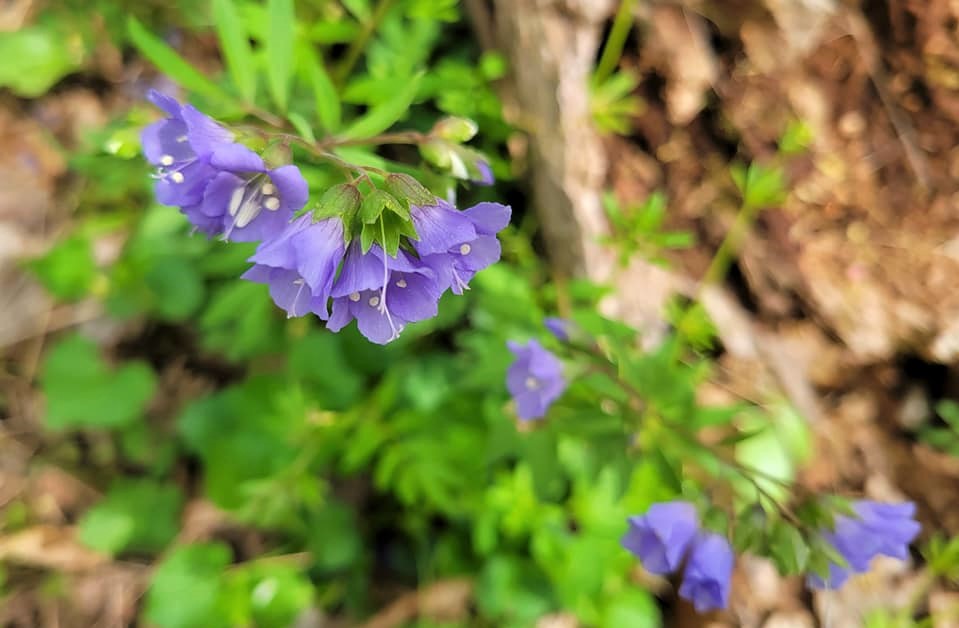
Jacob’s ladder, Polemonium caeruleum – Not native to the US, it is in the same family as Phlox (Polemoniaceae) and grows in similar habitat to its flowering cousin in its introduced range.
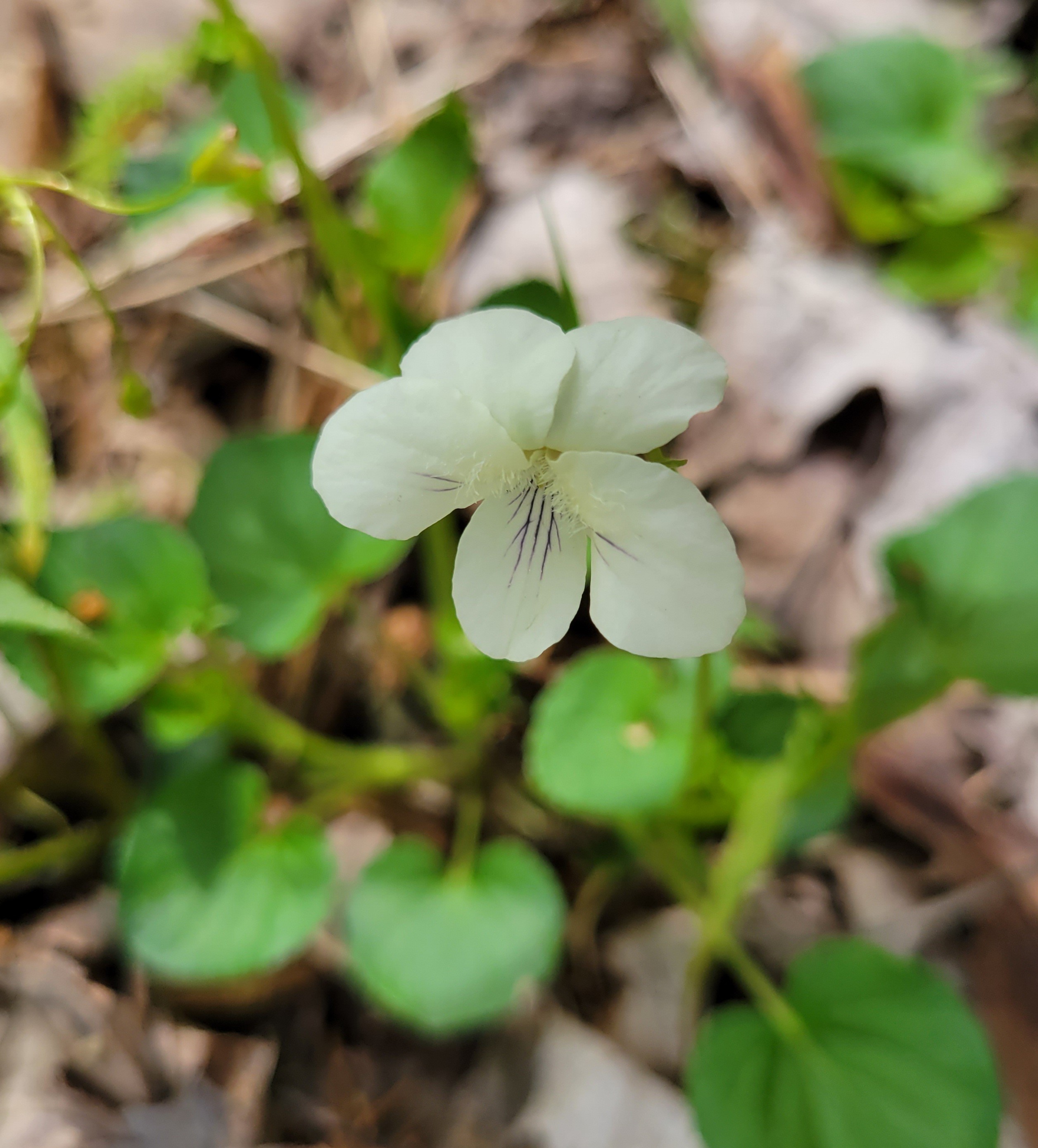
Cream Violet, Viola striata – A violet that isn’t the color violet! The cream violet is a common flower in eastern woods, but it grows further inland than coastal regions.
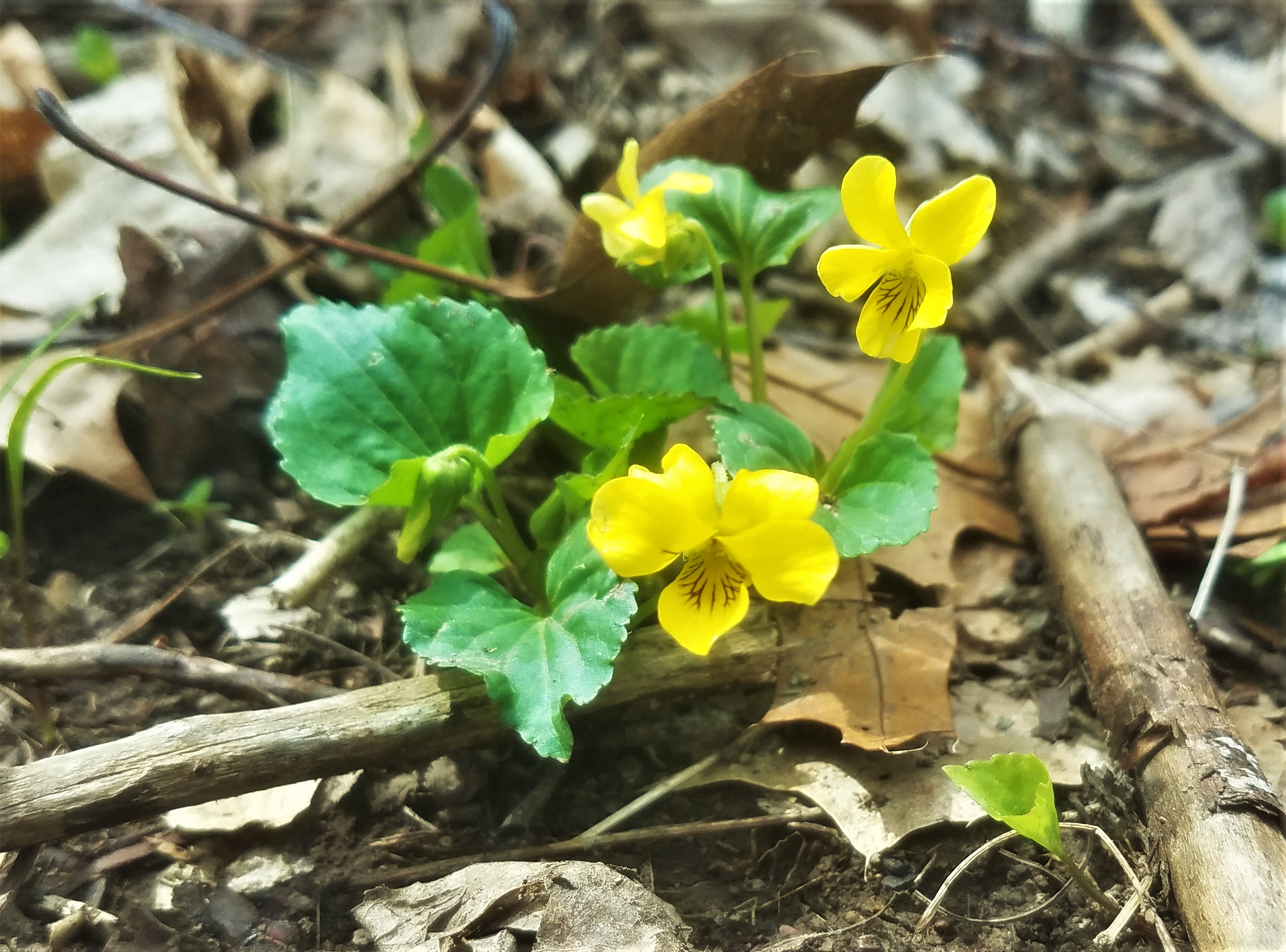
Yellow downy violet, Viola pubescens - We normally associate violets with the color…well…violet, but there are a number of yellow species, including this one! This little flower is often found in plant communities with trillium.
Where Might We Go?
These parks all have hiking trails leading to veritable wonderlands of flowers. And remember to continue acting as a leave-no-trace ambassador! Always dispose of trash/recycling properly (take it out of the park with you if there is nowhere at the park to dispose of it), stay on the trails, keep a respectful distance from wildlife, and leave behind the things you find.
Wild Flower Reserve - Raccoon Creek State Park, Beaver County
Parking and Trail Access: This reserve off Rt. 30 has well-marked signage for the Wild flower reserve and has a large parking lot and restrooms.
What Will You See: Nearly 30 species of wildflowers will bloom over the course of the spring. A few highlights include Virginia bluebells, white and yellow trout lilies, bloodroot, purplecress, violets, and northern spicebush.
Peak Time to For Wildflowers: Mid-April to mid-May
Cedar Creek Gorge, Cedar Creek Park, Westmoreland County
Parking and Trail Access: There is parking at the trailhead, by the boat launch. Most of the trail is easy walking, but some of the uplands part of the trail are a bit less developed (a more natural, adventure feel!)
What Will You See: Spring beauties, trout lilies, cutleaf toothwart, blood root, twinleaf, bluebells, and trillium.
Peak Time to For Wildflowers: Mid-April to May
Great Gorge Trail - Ohiopyle State Park, Fayette County
Parking and Trail Access: Access the trail from the Cucumber Falls parking lot and follow the path by crossing an open grate bridge over Cucumber Run and then turning right.
What Will You See: Red and white trillium, trout lilies, Dutchman’s breeches, and violets—among many others!
Peak Time to For Wildflowers: Mid-April to mid-May
Ramcat Hollow to Finnegan's Ledges along the Great Allegheny Passage Trail - Ohiopyle State Park, Fayette County
Parking and Trail Access: Access the GAP trail from the Ramcat Launch Area & Trailhead. From the parking lot, turn left (west) and walk toward Ohiopyle. (Upper right corner of the map)
What Will You See: This trail and the other Ohiopyle trail will display slightly different flowers, but you should probably still be able to see red and white trillium, trout lilies, Dutchman’s breeches, violets and others.
Peak Time to For Wildflowers: Late-April to late-May.
Hell Run Trail - McConnells Mill State Park, Lawrence County
Parking and Trail Access: The trailhead and parking are just off Shaffer Road, on the left side of the highlighted route on the map.
What Will You See: Around this time, visitors should be able to see a wide variety of flowers including trillium, jack-in-the-pulpit, and violets.
Peak Time to For Wildflowers: Late-April to late-May
Wolf Creek Narrows, Butler County
Parking and Trail Access: West side of Miller Road (Water Street) Bridge
What Will You See: White trillium and others.
Peak Time to For Wildflowers: Early May
Photo Credits: All photots by Maria Wheeler-Dubas. Header, Virginia bluebells; cover, wild geranium.

